Here are the largest flying birds in the world by wingspan.
When we think of the biggest animals in the world, we usually think of land animals or birds that can’t fly. After all, with such massive bodies, how could they fly?
Still, the largest flying birds in the world are hands-down enormous flying birds, and their sheer size will get your jaw dropped.
Did you know? The largest bird in the fossil record may be the 1,000-year extinct elephant bird of Madagascar, related to the ostrich, the biggest bird alive. They exceeded 9.8 ft in height and 1,100 lbs in weight.
16 Largest Flying Birds in the World
Here’re the world’s largest flying birds in ascending order by wingspan!
16. Trumpeter Swan
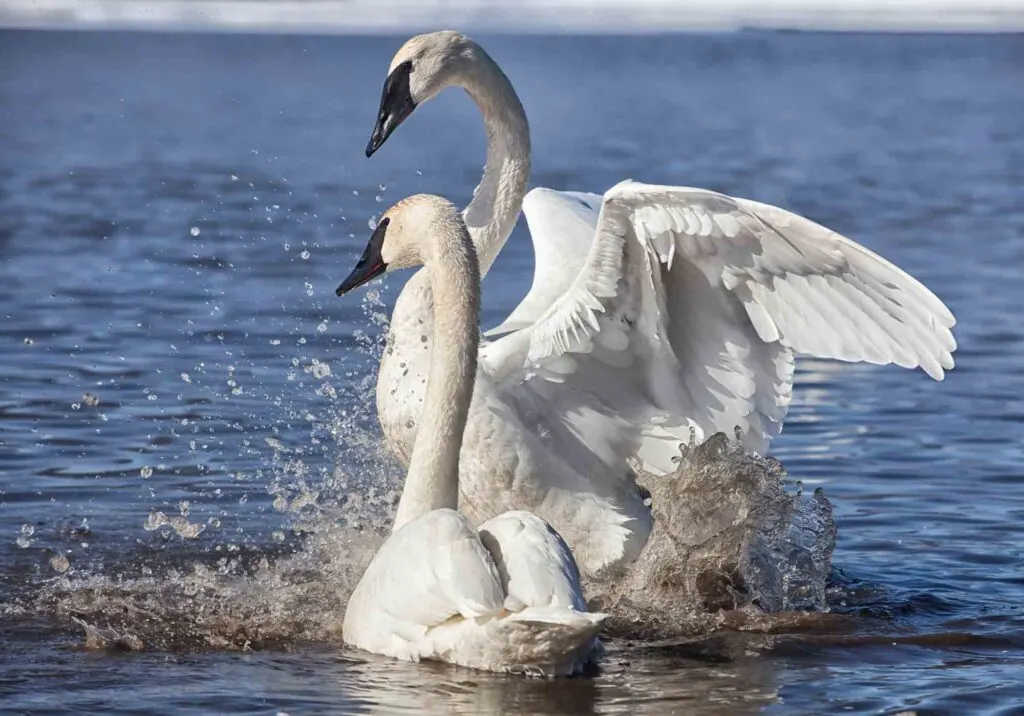
Size: 4.6 to 5.5 ft | Wingspan: 6.1 to 8.2 ft
Trumpeter swans are not only one of the most beautiful birds but also a waterfowl’s extant species and one of the largest flying birds.
They are found in North America and are closely related to the whooper swan found in Eurasia.
The trumpeter swans are one of the large winged birds and proudly have a wingspan of 8 ft.
Males of these birds are pretty large in length and can be up to 5.51 ft.
15. Kori Bustard
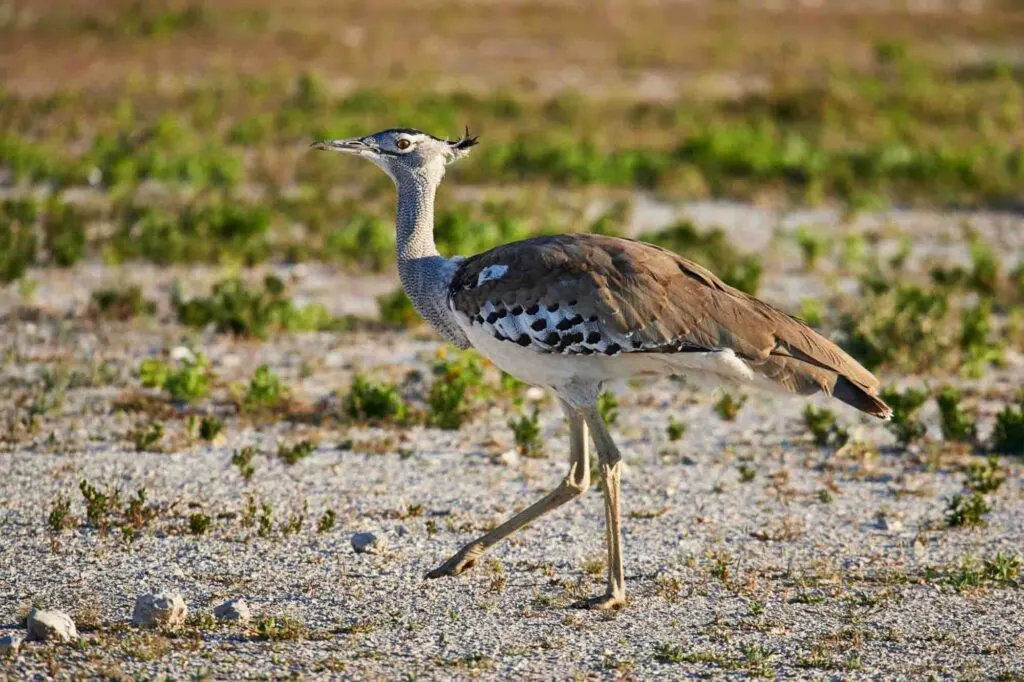
Size: 3.5 to 4.5 ft | Wingspan: 7.7 to 9 ft
Kori bustards are one of the largest flying birds in the world. In fact, they are the largest flying birds native to Africa and can be found in the areas of Southern Africa, including Botswana, Namibia, Southern Angola, and Southwestern Zambia.
Open savanna with sparse grass, bushes, and shrubs, as well as occasionally steep regions, are the kori bustards’ preferred nesting grounds.
Female kori bustards’ wingspan ranges from 5.10 ft to 7.3 ft. The wingspan of male kori bustards is between 7.7 ft and 9.0 ft.
Those giant birds are incredibly unique because the male kori bustard is actually considered to be the heaviest flying bird.
Well, you may be wondering, how heavy can those birds get? Those interesting birds’ weights can be as much as 40 pounds, making them the largest flying birds by body weight.
14. Lappet-Faced Vulture
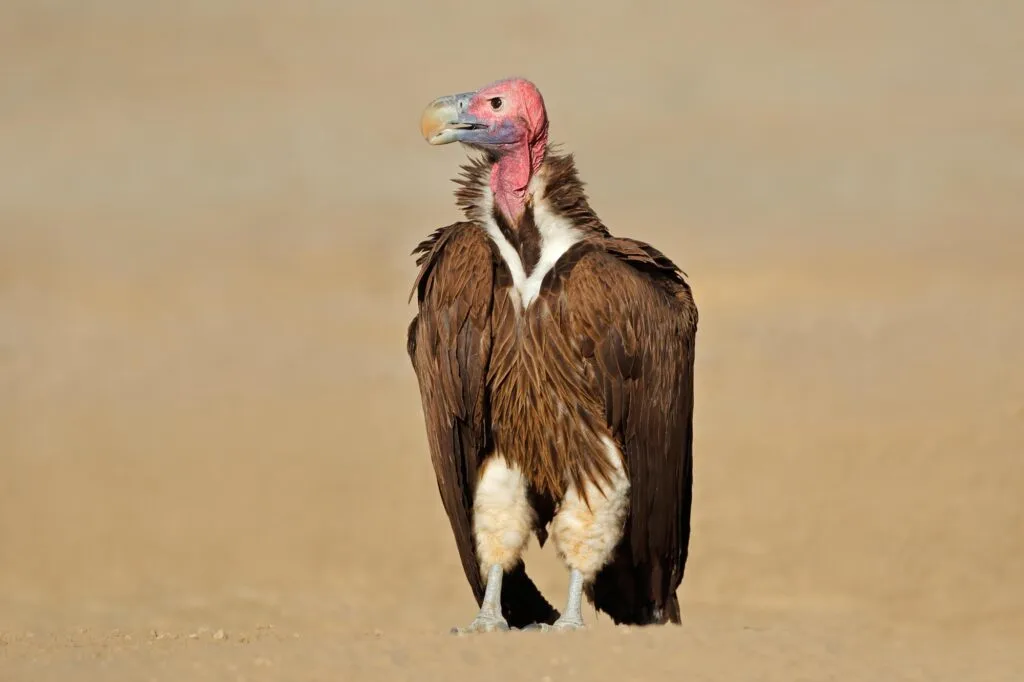
Size: 3.08 to 3.75 ft | Wingspan: 9 ft
Lappet-faced vultures are old-world vultures mainly found in Saudi Arabia, Sub-Saharan Africa, Oman, and Yemen.
Those birds mostly live in semi-arid or desert regions, where there are few trees and only short grasses. The body length of lapped-faced vultures ranges from 37 inches to 45 inches.
The Lappet-faced vultures are considered to be the large winged birds in their range.
The Wingspan typically is 8.2 to 9.7 ft long. Those fantastic creatures are pretty heavy, and their weight can be as much as 20.7 lbs.
13. Bearded Vulture
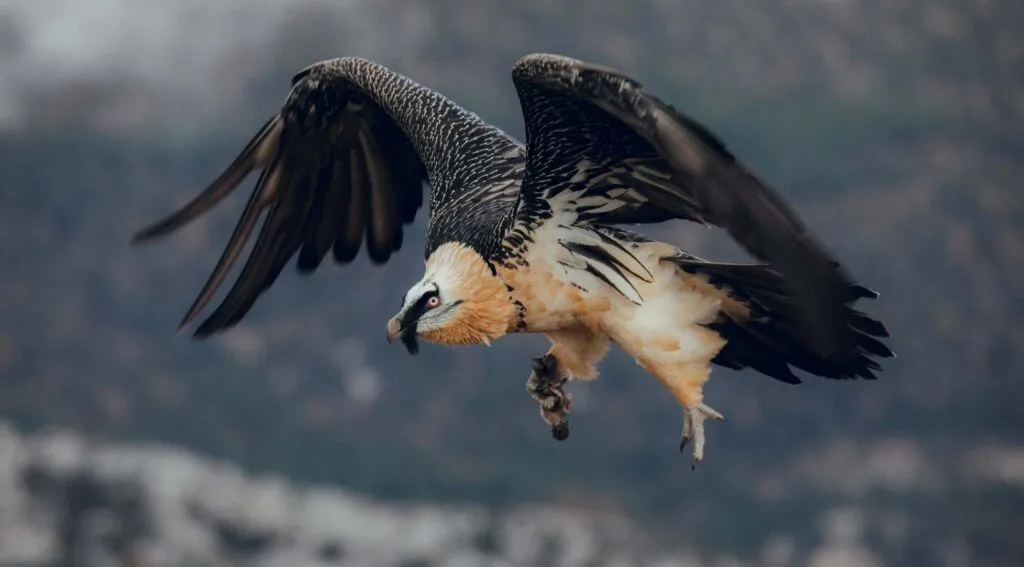
Size: 3.08 to 4.08 ft | Wingspan: 7.7 to 9.3 ft
The only member of the genus Gypaetus, the bearded vulture is also referred to as lammergeier.
Bearded vultures are native to Europe and are mostly found in the areas of the Alps.
Those creatures are pretty rare and prefer to build their nests in high mountains and very high rock ledges. Almost all of southern Europe’s high ranges, including the Alps, historically had beard vultures.
Those rare birds of prey are very big in size, and adults’ length ranges between 37 to 49 inches.
The wingspan of the bearded vulture can be as long as 9.3 ft. Huge, right? They are pretty heavy, too, and can be as large as 17.2 lbs.
12. Antipodean Albatross
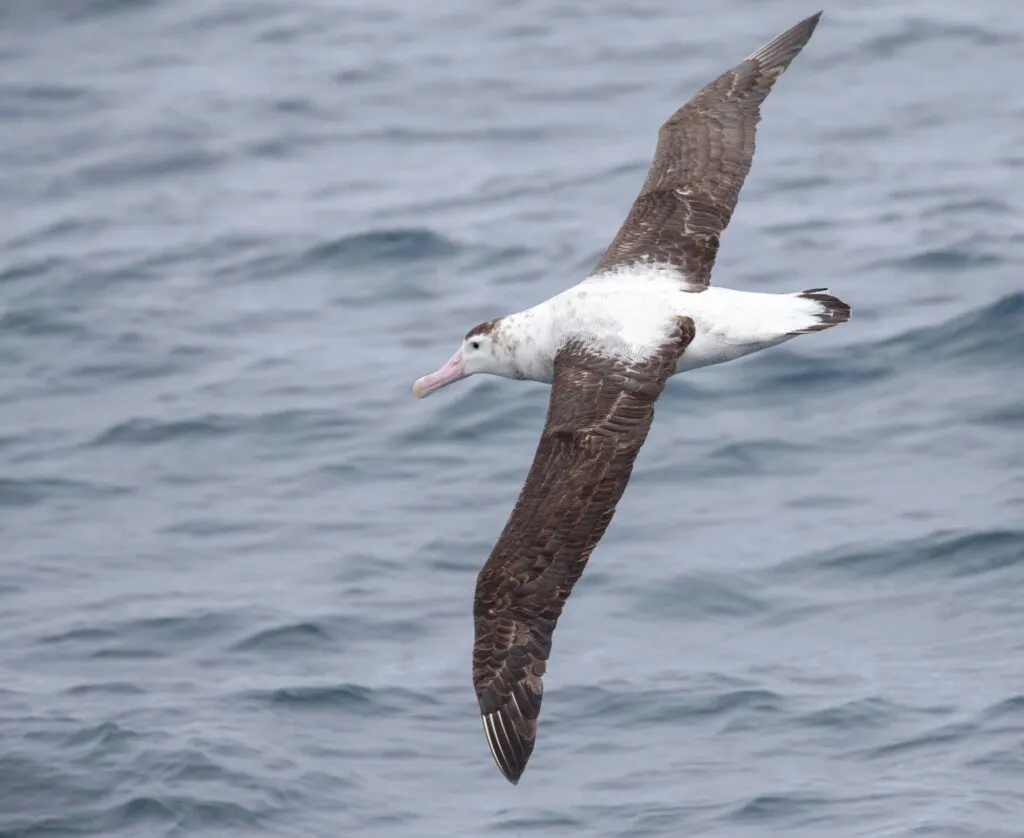
Size: 3.6 ft | Wingspan: 9.8 ft
The Antipodean albatross is one of the largest flying birds and come from the Albatros Family.
They are mainly found across the Southern Pacific countries, including Australia and Chile.
Those birds prefer to breed in specific locations that include Campbell Island, Auckland Islands, and Antipodes Islands.
Antipodean albatrosses are pretty large and can be up to 3.6 ft in length. The wingspan of the Antipodean albatross can be as large as 9.8 ft.
Those beauties generally live at sea and visit the land in order to raise their babies every two years. However, the Antipodean albatross do not breed until the age of 7 years at least.
11. Eurasian Black Vulture
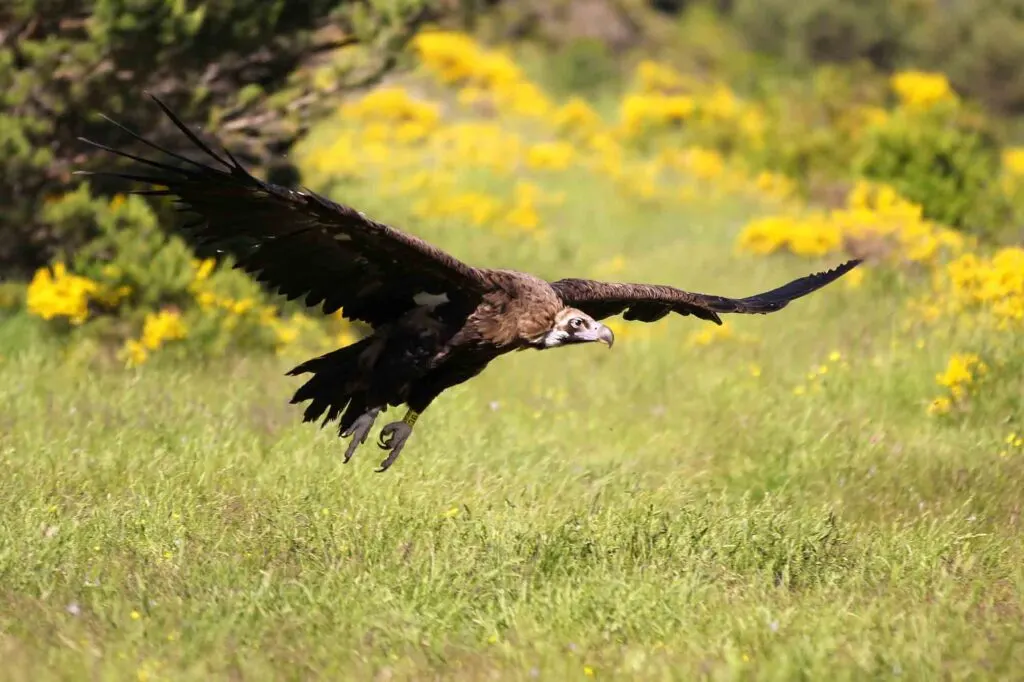
Size: 3.3 to 3.11 ft | Wingspan: 8.2 to 10 ft
The Eurasian black vultures are also often referred to as Cinereous Vultures.
They are Old World Vultures, and despite the similarities in the name, they are not in relation to American Black vultures.
The Eurasian black vultures are spread across Southern Europe and part of Asia.
It needs to be noted that they are endangered in the European range.
Those birds love to build nests on the tall trees and cliff edges of high mountains. Those huge birds have a wingspan of 10 ft and weigh approximately 21 lbs.
10. California Condor
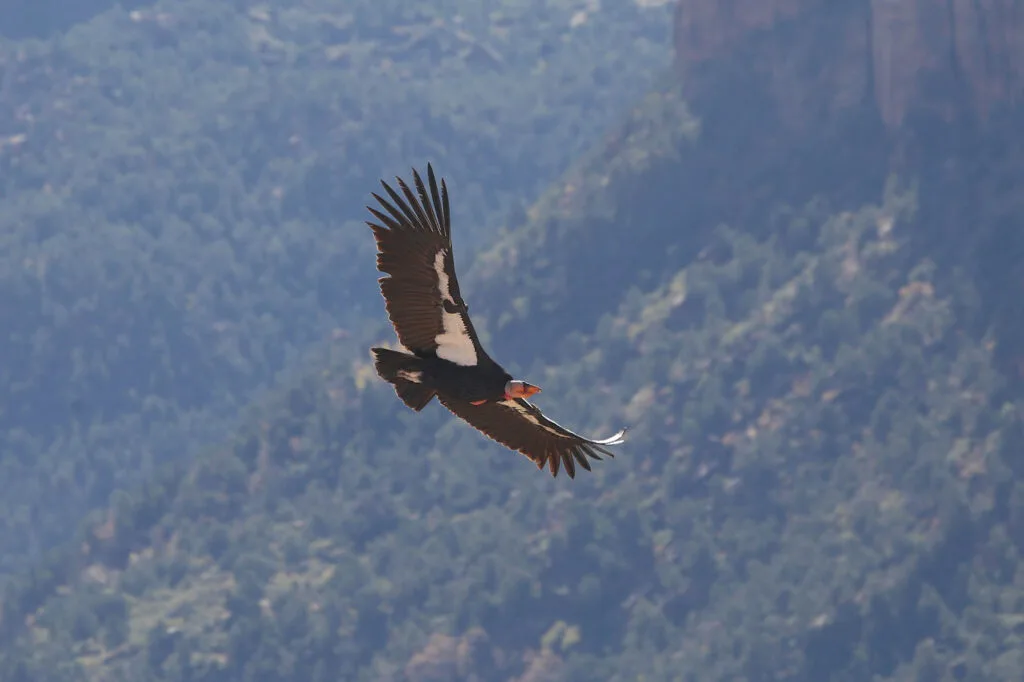
Size: 3.6 to 4.6 ft | Wingspan: 8.2 to 9.8 ft
Well, it is easy to guess from its name that those large birds come from central southern California deserts.
However, populations are also found in Utah, Mexico, and Arizona. These ugly animals love to make their nests on rocky cliffs.
California condors are large winged birds that have a wingspan of 9.5 ft and can weigh up to 26lbs.
In 1987, This New World Vulture became extinct in the wild. However, they survived and, with a little help, got reintroduced.
9. Northern Royal Albatross

Size: 3.75 ft | Wingspan: 8.9 to 10 ft
Northern royal albatrosses are one of the biggest flying birds that live in the New Zealand Territories.
Their habitats include the Chatham Islands, Enderby Islands, and Otago peninsula.
Those beauties typically weigh 14 to 18 lbs and have a wingspan that is as long as 120 inches.
Those birds are closely related to the southern royal Albatros, however, the species was split in 1998.
8. Himalayan Griffon Vulture
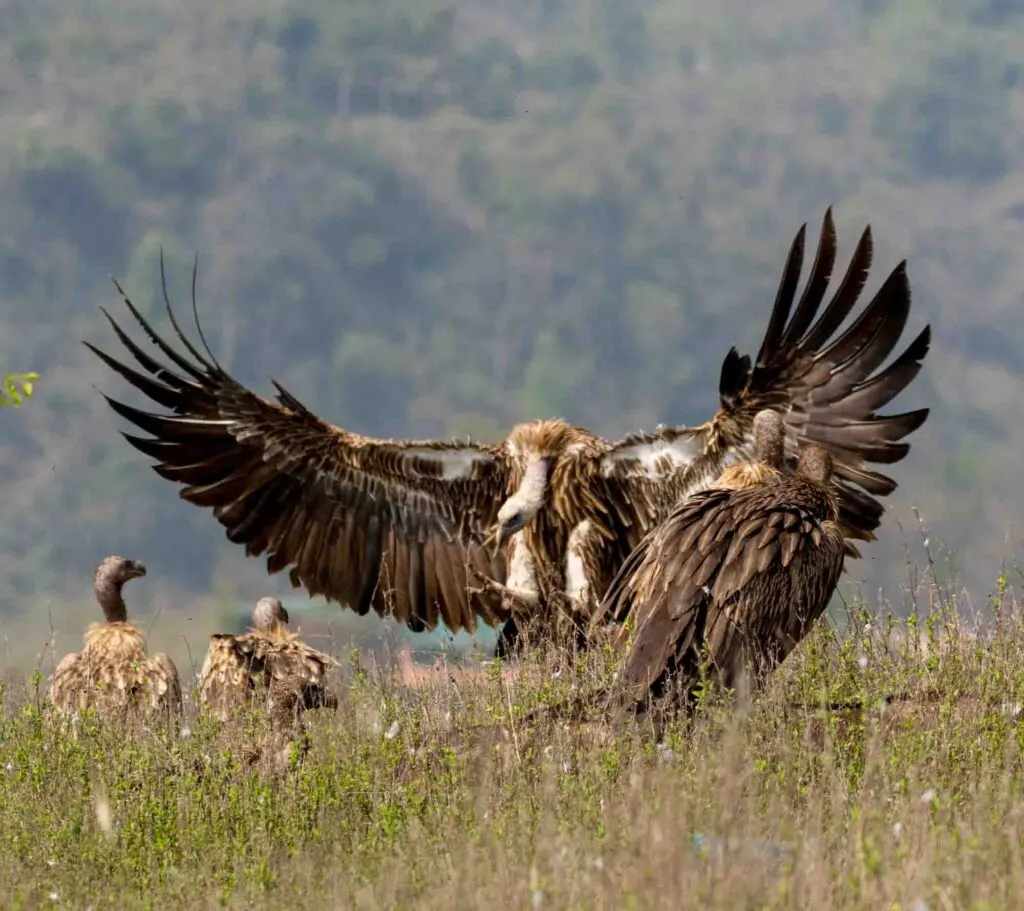
Size: 3.4 to 3.6 ft | Wingspan: 8.5 to 10.1 ft
The Himalayan griffon vultures are localized scavengers and are very important creatures for the ecosystem. They help nature by removing and processing carrion.
Those birds are found in high-elevation regions of the Tibetan Plateau and Himalayas and are perhaps the largest and heaviest birds in the region.
The average weight of the Himalayan griffon vultures is 20 lbs. The wingspan of those amazing creatures varies between 8.5 to 10.2 inches.
Unfortunately, in the IUCN red list, those birds are listed as near threatened.
7. Andean Condor
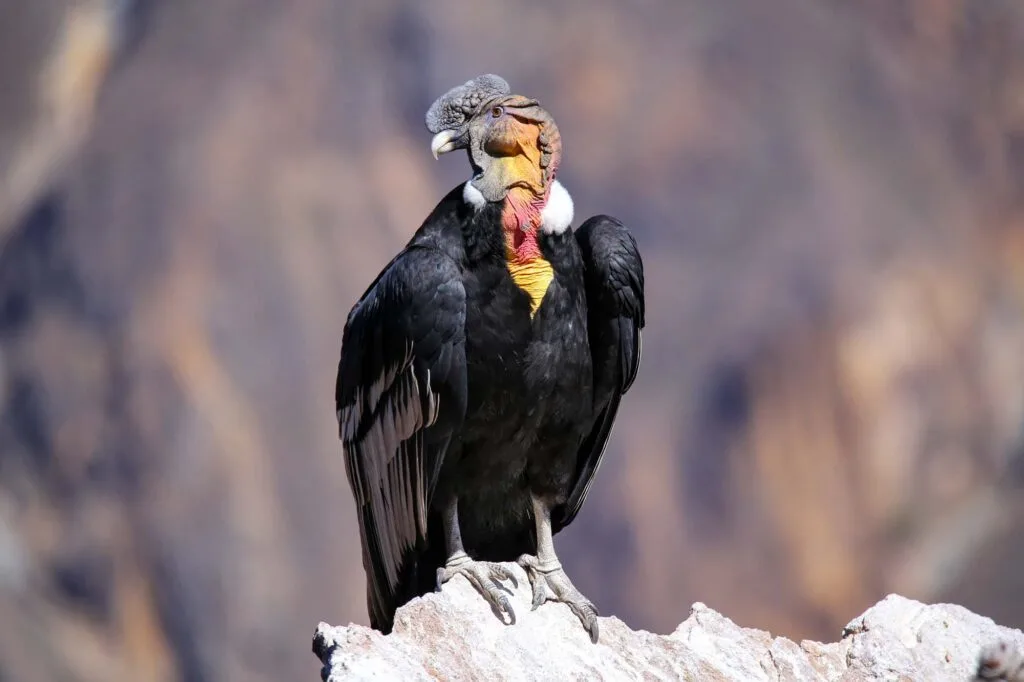
Size: 3.3 to 4.3 ft | Wingspan: 9.3 to 10.1 ft
Andean condors are considered to be the largest flying birds of prey in the world.
Those Cathartid Vultures are native to South America. They are generally found in the Anders mountain and the coast of western South America.
The wingspan of those amazing birds is as long as 10.10 ft, and their weight can go up to 33 lbs.
Because of their large size and weight, they often fly in areas that are very windy.
Did you know? The Andean condor is Chile’s national bird and is even presented in the country’s coat of arms.
6. Marabou Stork
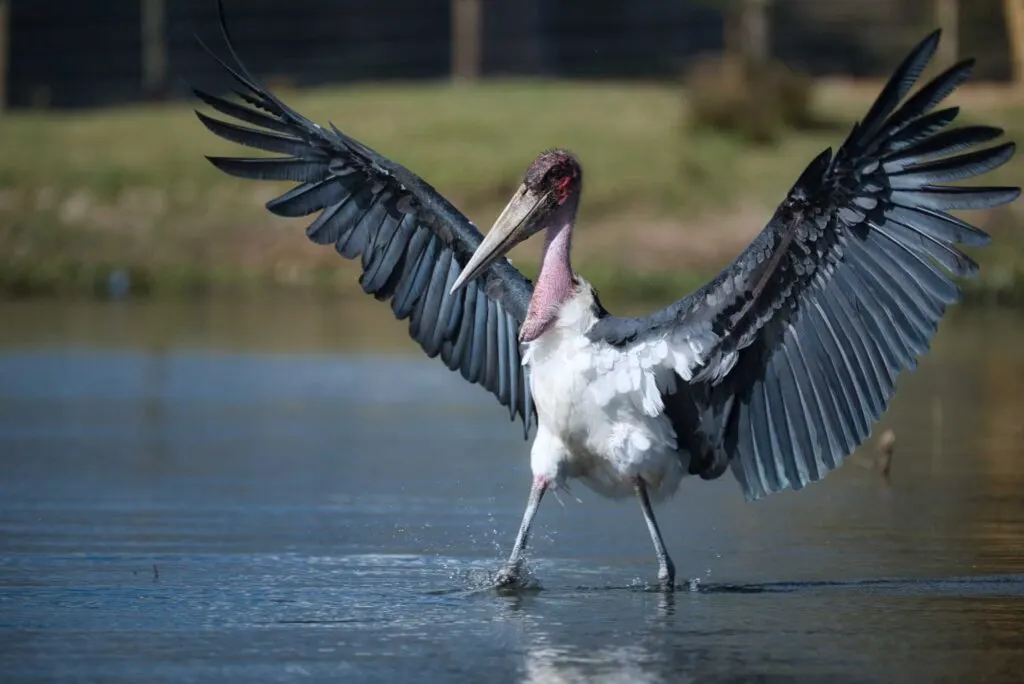
Size: 4.99 ft | Wingspan: 10.5 ft
Marabou storks belong to the family of Ciconiidae and are found in Africa, specifically in the southern part of the Sahara.
These funny-looking birds love to make their homes in arid habitats and are often found near landfill sites.
An interesting fact about those birds is that they come with clock-like wings and have skinny legs and a mass of hair.
Because of those visual characteristics, they are called “Undertaker birds.” The wingspan of marabou stork can be 10.5 ft long, and approximately, they weigh up to 20 lbs.
5. Tristan Albatross
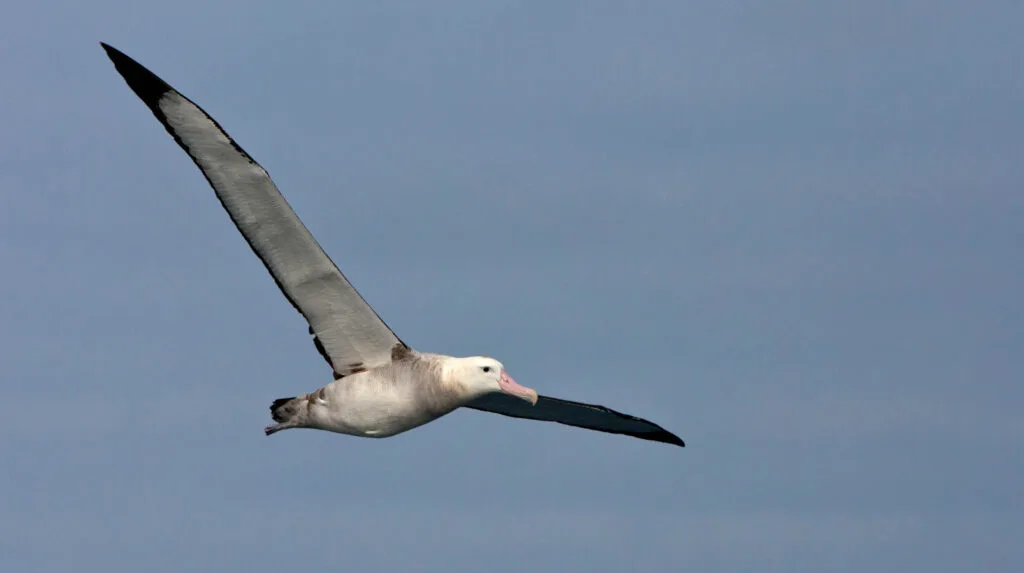
Size: 3.6 ft | Wingspan: 11 ft
Tristan albatross is a seabird that belongs to the genus of Diomedea. Their living habitat and location have not yet been determined, however, according to the satellite tracking, they are located in South Atlantics.
Males are often found near the South American Islands, however, females often head to Africa for breeding purposes.
Those large birds are endemic to the Tristan da Cunha island.
Also, Tristan albatrosses have a wingspan length of up to 11 ft and weigh up to 16 lbs. Those birds are rarely seen attaining their full plumage.
4. Dalmatian Pelican

Size: 5.3 to 6 ft | Wingspan: 8 to 12 ft
The Dalmatian pelican can be considered one of the world’s largest flying birds that live in freshwaters.
If you just look at their flocks fly, you will definitely be amazed by their spectacular beauty. They live in the areas across Central Eurasia and are spread from the Mediterranean to Taiwan Straight.
This huge bird is by a slight margin the largest of the pelican species and one of the largest living flying bird species.
Those birds can be up to 6 ft in length and weigh an average of 25 lbs. The wingspan of the Dalmatian pelican can be as long as 12 ft.
Therefore, the Dalmatian pelicans are considered to be the world’s biggest flying birds.
What makes those birds especially interesting is that they are monogamous. Once they find a mate, they stay with them for life. Couples migrate, live, and raise their offspring together.
3. Southern Royal Albatross
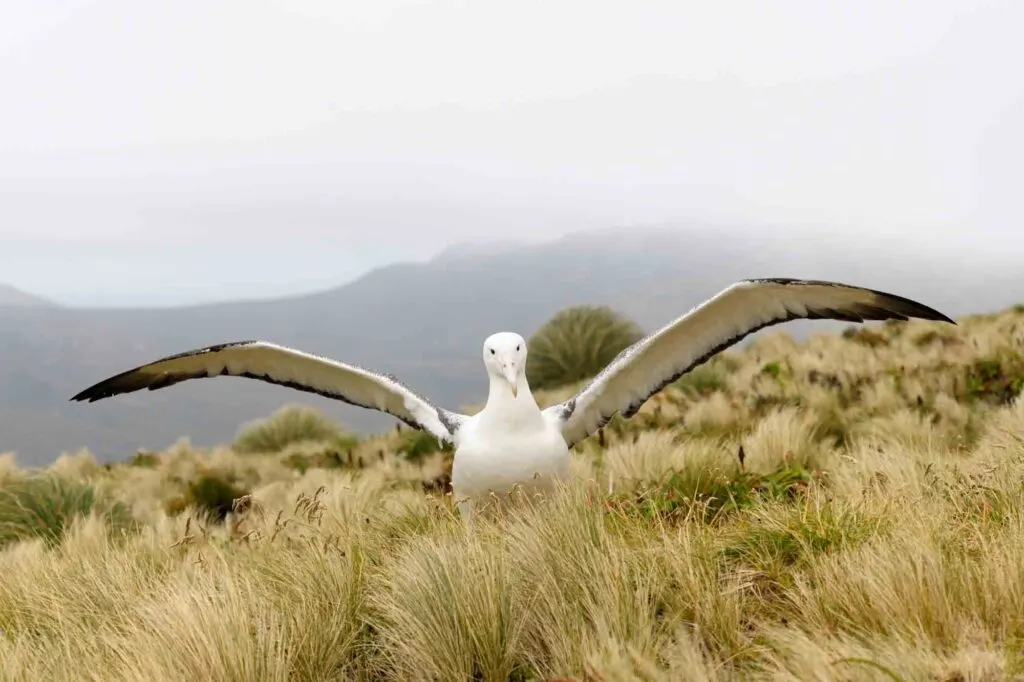
Size: 3.6 to 4 ft | Wingspan: 9.5 to 12 ft
The southern royal albatross belongs to the albatross family and is among the largest species of albatross.
The average wingspan of those birds goes up to 12 ft, and their average weight is 19.8 lbs.
The southern royal albatross is endemic to New Zealand and are mainly found in Subantarctic Campbell Island.
When mating, the southern royal albatrosses live in scattered couples and loose colonies. But at sea, they frequently go alone.
When there is food, a colony will congregate, frequently near fishing boats. Those seabirds forage for food for both themselves and their young.
2. Great White Pelican
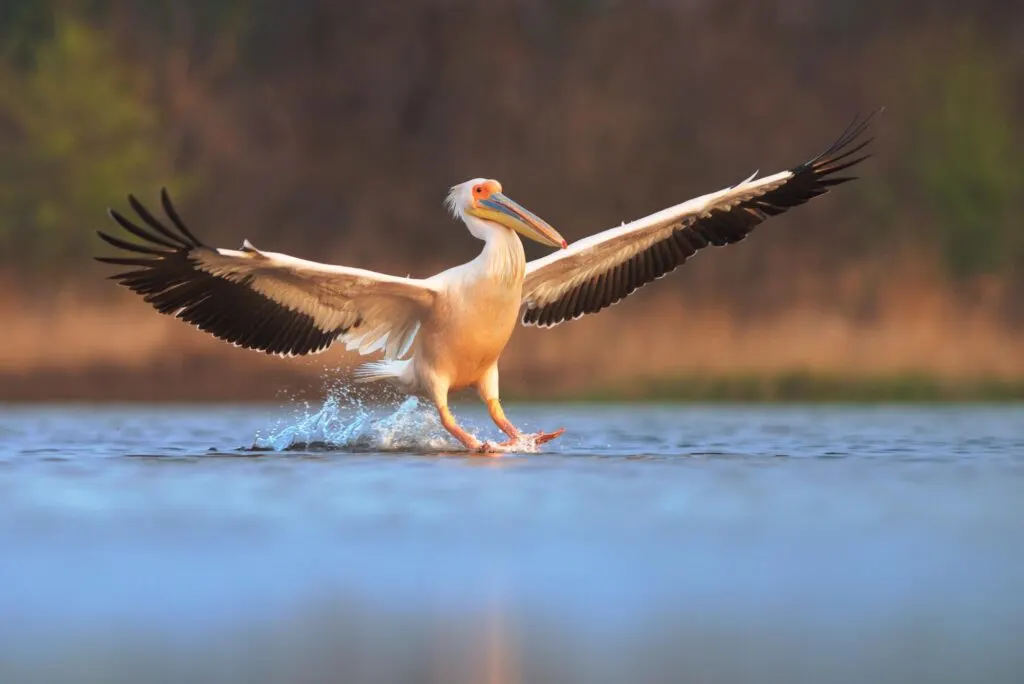
Size: 4.6 to 5.9 ft | Wingspan: 7.5 to 12 ft
Great white pelicans are often found in swamps and shallow waters. They are generally found in southeastern Europa all the way to Asia and Africa.
The specific locations include Tanzania, Nigeria, Chad, Northern Cameroons, South Africa, Zambia, and Botswana.
Great white pelicans have a massive wingspan of 12 feet long and are considered to be the biggest flying birds.
The weight range of those beauties is between 20 and 33 lbs. Those birds live and move around in large colonies.
Generally, males are the defendant of the territory, and when they get aggressive, they use the bills for attack and protection.
1. Wandering Albatross
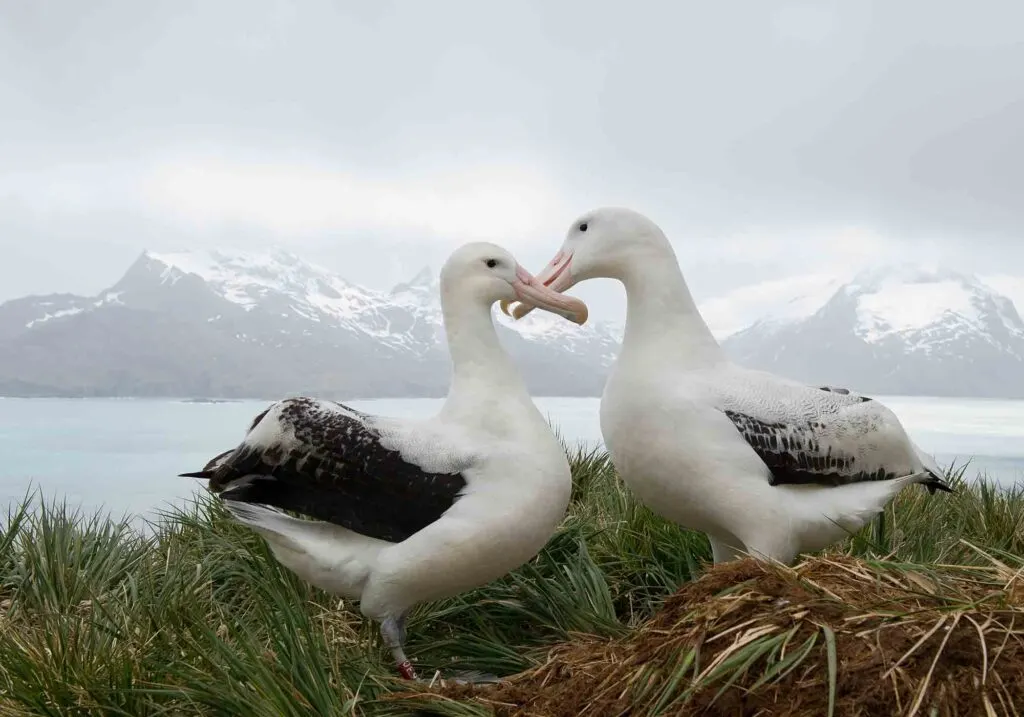
Size: 3.6 to 4.5 ft | Wingspan: 8.3 to 12.1 ft
The largest bird on this list, the wandering albatross, is also called the “snowy albatross” because of its beautiful white wings. These birds with large wingspan come from the family of Diomedeidae.
The main habitat and location of the wandering albatross are across the Southern Ocean. This includes subtropical waters and antarctic and sub-antarctic areas.
Snowy albatross has the largest wingspan, which can be as long as 12.1 ft—that’s the world’s biggest bird wingspan! On average, this species of bird weighs up to 28 pounds.
Regardless of their weight, they are wonderful gliders. The wandering albatross has the ability to soar in the sky without flapping its wings, and this can last for several hours.
Did you enjoy reading about the largest flying birds in the world? Then share this post with your friends!
